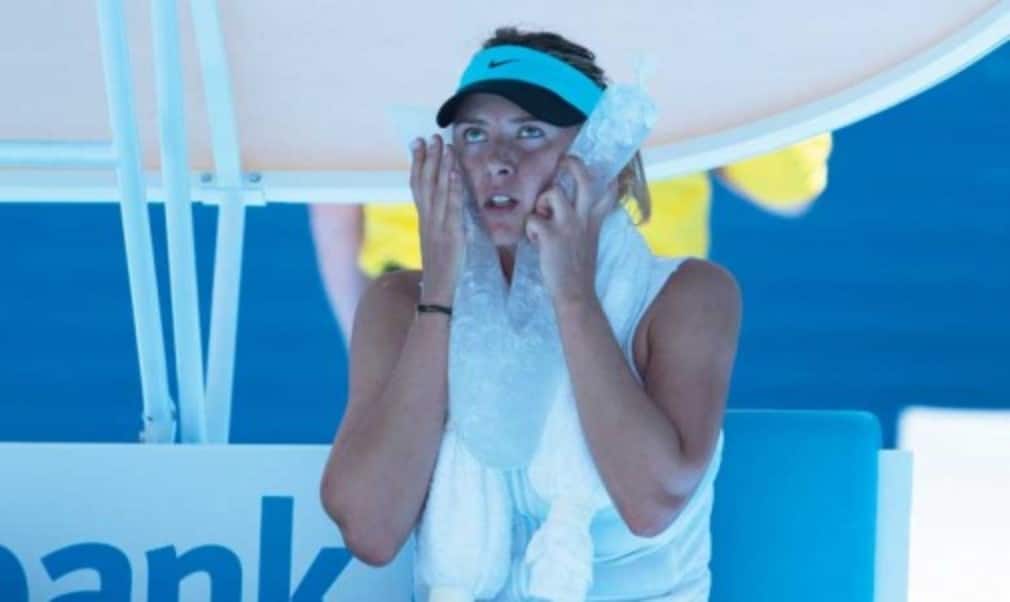
Beating the elements
Originally published on 01/04/14
You can spend hours in the gym and on the practice court, eat the right food and have the tactics to beat your opponent, but one thing that you cannot prepare for is the elements. When players walk out on court they will have researched their opponent and will have a gameplan, but you have to be adaptable.
In January we saw ball boys fainting and spectators suffering heat stroke as temperatures reached over 40°C in the opening week at the Australian Open. No matter how hard you work in the off-season, nothing can really prepare you for that kind of heat. In those conditions it comes down who can cope with playing for two, three hours in the blazing heat, and not necessarily who is the better player. Staying hydrated is so important, and we do everything we can to keep the players as comfortable as possible.
At the 2009 Australian Open when Fernando Verdasco played in the semifinals against Rafael Nadal, we prepared special ice towels for him. The ice towels provided by the tournament do not stay cold for very long, so we got a plastic bag from the stringing room, the kind they wrap the rackets in. Then we got lots of ice from the physio’s room, tied the bag up and pierced holes in it. We wrapped it in a soaking wet towel and then put another towel around it and put it in the freezer. In a 90-second changeover if that ice towel can help cool a player down an extra degree, it is totally worth the effort – you have to do everything possible for these guys to give them every chance of winning.
In my opinion the first three months of the season are the most demanding on the players. It doesn’t matter where you go after the Australian Open, you have a long journey, either to the Middle East or for the indoor tournaments in Europe. Then it’s over to the USA for the joint ATP-WTA events at Indian Wells and Miami.
There’s only a week or so between the two events, but the conditions at Indian Wells and Miami are so different. Indian Wells is in the desert and at altitude, so it is a dry heat, while Miami is virtually at sea level and it is really humid.
It is hot during the day at Indian Wells but in the evening the wind picks up and it gets really chilly. The sand storms can be really tough to deal with as well, especially if you wear contact lenses – you’ll see a few more players wearing glasses at that event. If you are playing into the wind you have to hit through it, whereas if it is coming from behind, you are just spinning the ball because you don’t need to put much pace on it. If the wind is coming from the side you can’t go for the lines because you don’t want to risk making too many errors.
Andy Murray is an example of a player who is able to adjust to any conditions. It helps that he is one of the fittest players on the tour, but he is also very intelligent and knows exactly what to expect from each city or tournament he goes to. He knows that if he goes to Indian Wells and plays in the night match the temperature is going to drop. Murray trains in Miami so he is used to the humidity and of course being from Scotland he is used to the cold too, but as a player there is nothing you can really do about rain delays.
I remember working with Wozniacki at the 2010 US Open before her quarter-final against Yanina Wickmayer. It rained for ages and then it finally stopped so they made it onto court and it started raining again and there was another delay. It’s tough for the players because it is an aspect of their game they have no control over, but at the end of the day their opponent has to deal with the same conditions. When you work with a player and they are struggling you have to remind them why they are here. Coping with the elements is part of their job, and the more adaptable they are the more successful they will be.
This is an excerpt from Heat Strokes by Mats Merkel. To read the full article, get your hands on a copy of tennishead Volume 5 Issue 1. Subscribe to tennishead today or download tennishead on iTunes.


